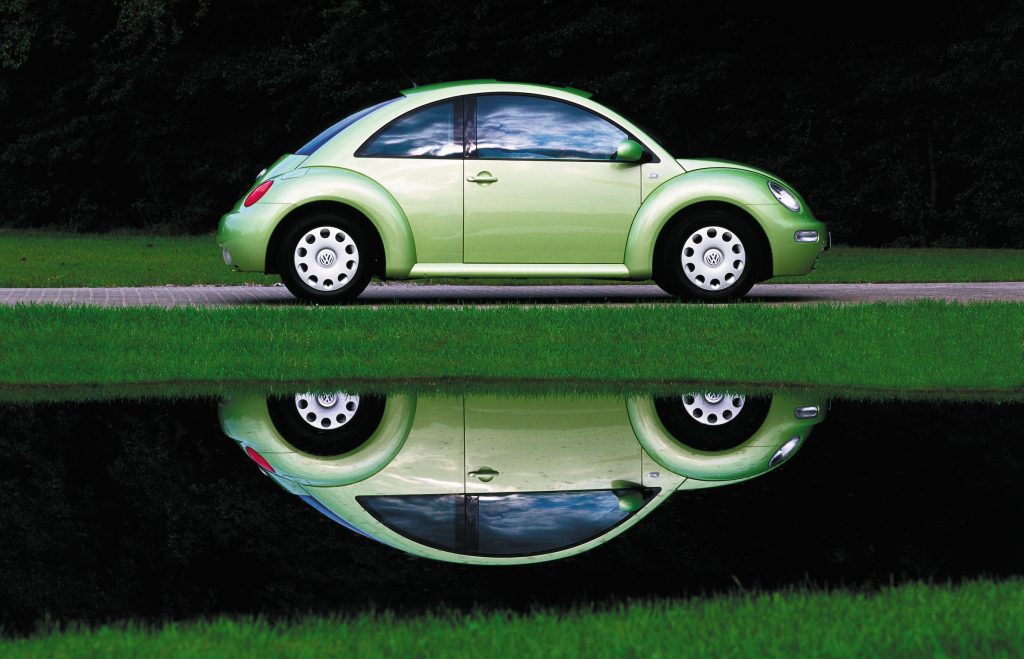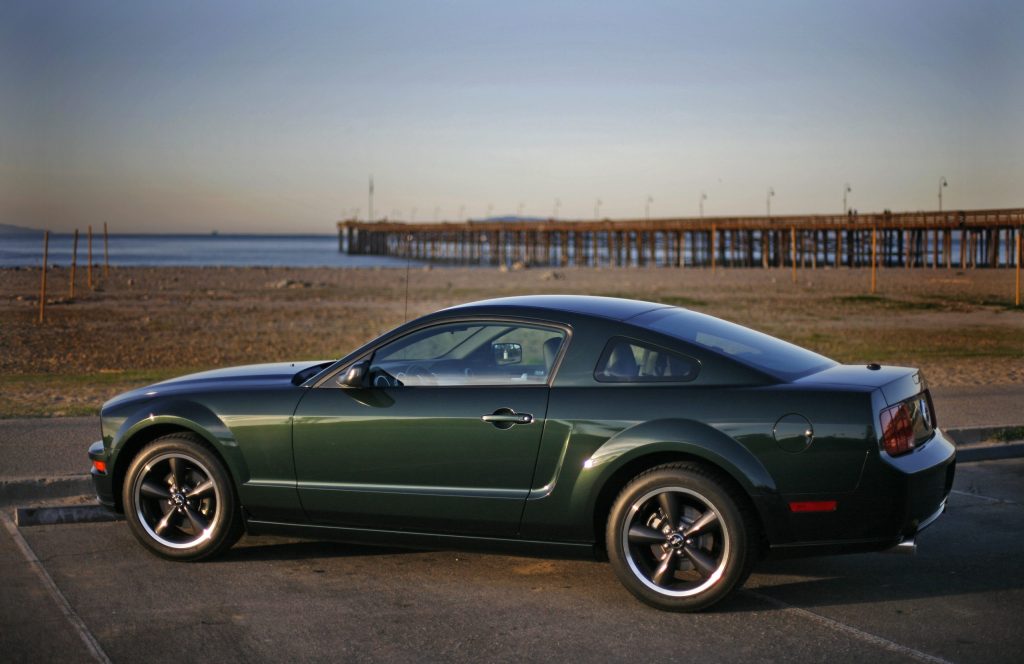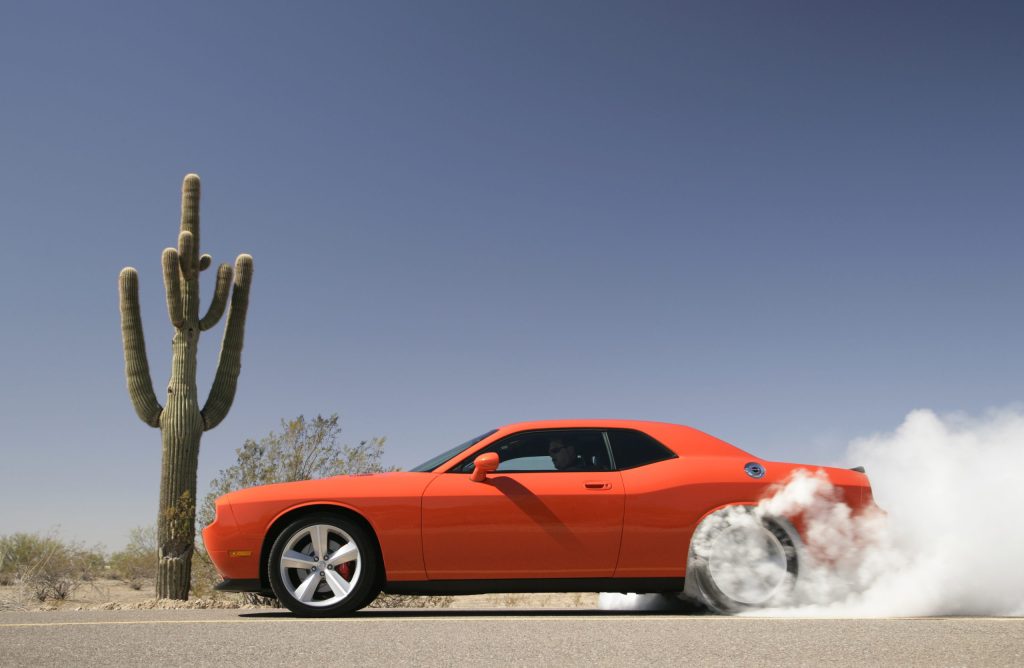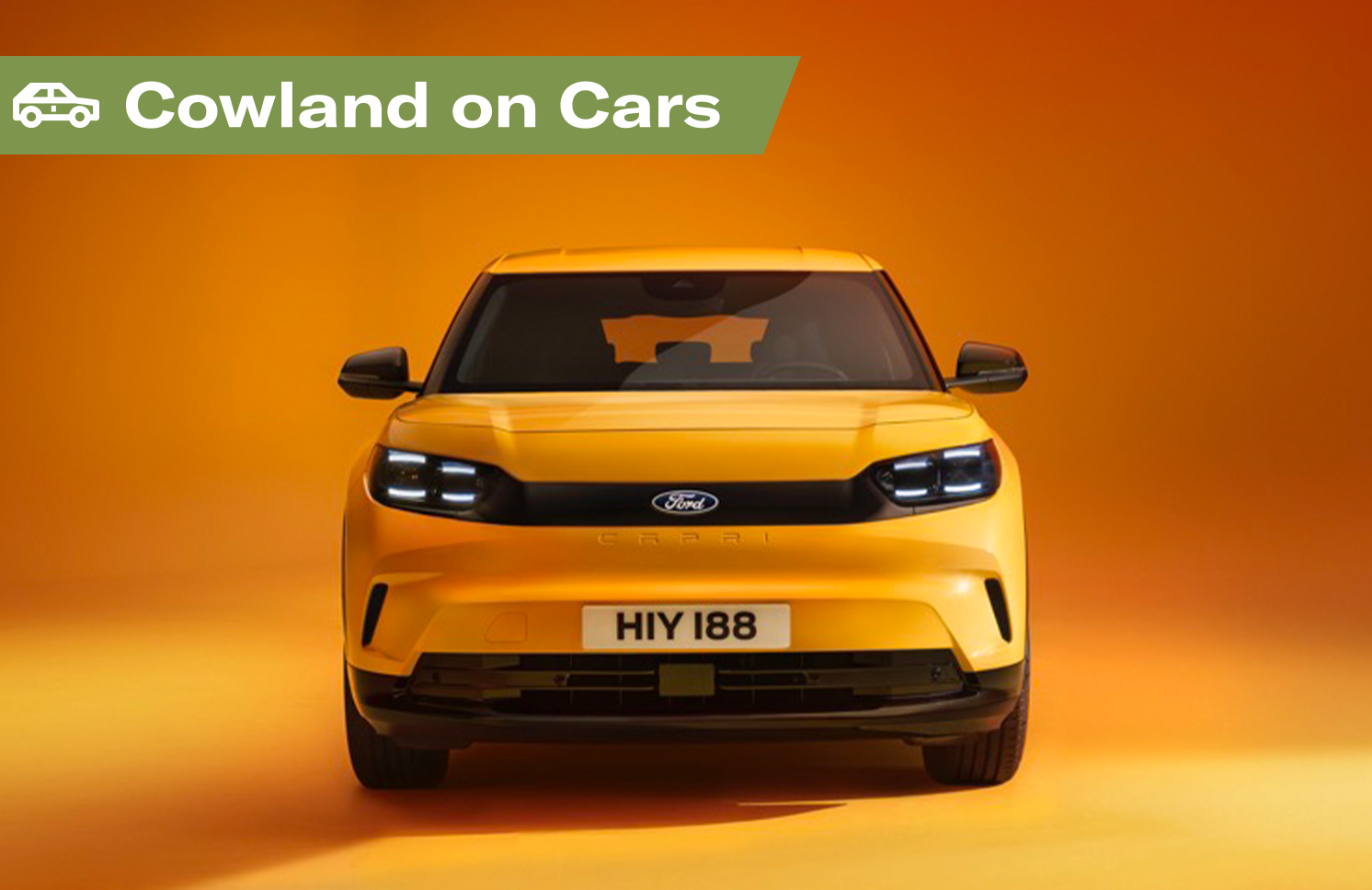In case you missed it, fans of the Blue Oval have been in uproar these last two weeks, after Henry’s team decided to re-release the fabled Capri. What should have been a happy moment for fans everywhere of the couth coupe turned into full internet outrage as Ford unveiled a Polestar-esque SUV instead. It’s safe to say, it really wasn’t what the die-hards wanted . . .
It made me think long and hard about the gamble manufacturers take when they decide to reboot an old franchise. If you’ve had chance to catch the latest Axel F film over on Netflix, you’ll see the issue; namely, people really don’t mind you reheating yesterday’s dinner, as long as it still has almost exactly the same ingredients in it as the very first time you made it. And if you look at the cars that have captured the public’s imagination the second time around, the very same is true.


Volkswagen’s reimagined Beetle may have been a FWD water-cooled hatch, instead of a RWD air-cooled saloon, but it somehow managed to capture most of the magic of its forebear. It was cute, it was classless, and it was affordable. It filled the same niche that its grandparent had, and it sold to a later generation of the same kind of people who bought the original. While it never reached the heady sales heights of 21.5 million, VW still managed to find homes for more than 1.6 million of the Golf-in-a-party-frock, and these days, that’s not bad going for a niche product.

BMW were similarly successful in reinvigorating the Mini, of course. Frank Stephenson famously sketched what he felt would have been the missing generational model year changes between the old car and the new to arrive at a design language and shape that tipped enough of its hat to appease the purists and enthusiasts, while still very much being its own model. When you look at those early 2001 cars now, they really do look like the natural development of the Issigonis shape. Mind you, they have jumped the shark somewhat with the latest iterations. The range-topping Countryman SE ALL4 now weighs three and a half times the figure of the 1959 car, which makes me wonder if they should think about bringing the ‘Maxi’ name back instead?
Ford has got form with re-releases. While one could argue that the Mustang never really had a hiatus in the same way the Capri has, the full S197 relaunch and restyle in 2005 really did re-capture the hearts – and wallets – of Americans everywhere, mainly because it was the model that most looked like the very first Mustangs in quite some time. And as for the beautiful concept car that became the third-generation Dodge Challenger in 2008, well, I liked that one so much that I put my money where my mouth was.


So it can be done. You can bring these zombie names back from the dead and find considerable sales success, as long as you stick roughly to the original script. What Ford has shown with the Capri, however, is that if you call it Beverley Hills Cop, and what’s on the tape is The Nutty Professor, you’re going to have a tougher time. Even if adopted national treasure Eric Cantona is in your corner.
Many took to Twitter/X to mansplain how tricky it is for car manufacturers to register a new name tag. This is very true; the IP searches, trademark applications, and associated legal wranglings can take years and cost millions. It’s SO much easier to dip into the family archive and see what can be dusted off. But why the Capri, when Cortina, Sierra, Scorpio, or even Orion could have been stuck on its rump? Here in the UK, the Capri has near-mythical status amongst a certain demographic as the hairy-chested, tyre smoking, cigarette-burning four-wheeled icon of teenage rebellion – even if yours was only a weedy 1.3. The Capri truly was Europe’s Mustang, responsible for serious car park bragging rights, being the winner of many traffic light Grands Prix, and let’s be totally honest now, the reason why many average suitors got past their first date and onto their very important second. This wasn’t just the car you promised yourself. It was the lifestyle you promised yourself . . .



Ford’s marketing boffins aren’t daft. They know all of this and will doubtless have rooms full of data on who will and won’t buy each one of their products. What they also know, based on their experience following the uproar from the Mustang Mach-E, is that if you want to get easy column inches and internet clicks, simply paint a moustache on the Mona Lisa. The old guard will create enough vitriol to make your server melt, whereas your new customers? Well, they’re kind of digging the fact that she’s now non-binary. I mean, it’s only some old painting anyway, right?
I saw the car at the Goodwood Festival of Speed this year, and while you’ll probably watch me create my own renaissance masterpiece before I put my own money into one, it’s a fairly inoffensive mode of transport that will doubtless take a lot of people – and their kids and dogs – to work and school. It may be six cylinders short and two doors over what I might think a Capri should be, but I’m 51 this year, and therefore, probably not the target market anyway.

What the new car is brilliant at though is making you realise how crisp and beautiful the original coupe styling was. What a looker those original cars were. What a bargain they offered in period. In fact, this whole hoo-hah has made me spend hours looking at the prices of classic Capris and working out if I should buy one. And that is the very cleverest bit of marketing of all.







Car design is so soporifically boring these days anyway, names ought to be irrelevant – yet I nonetheless find myself rolling my eyes whenever a brand is ‘resurrected’.
As you say Paul, it wouldn’t be as bad if they at least *resembled* their forebears, rather than a thinly-veiled excuse to shift another set of SUV’s. What makes it worse is the inevitability of the damn trick working…